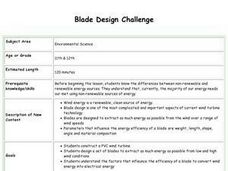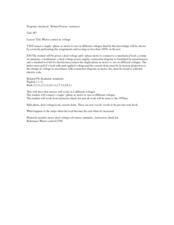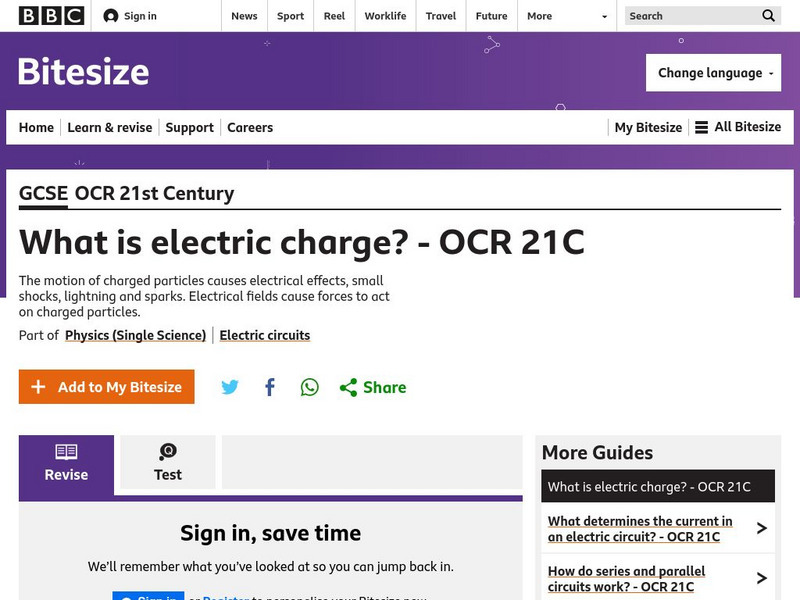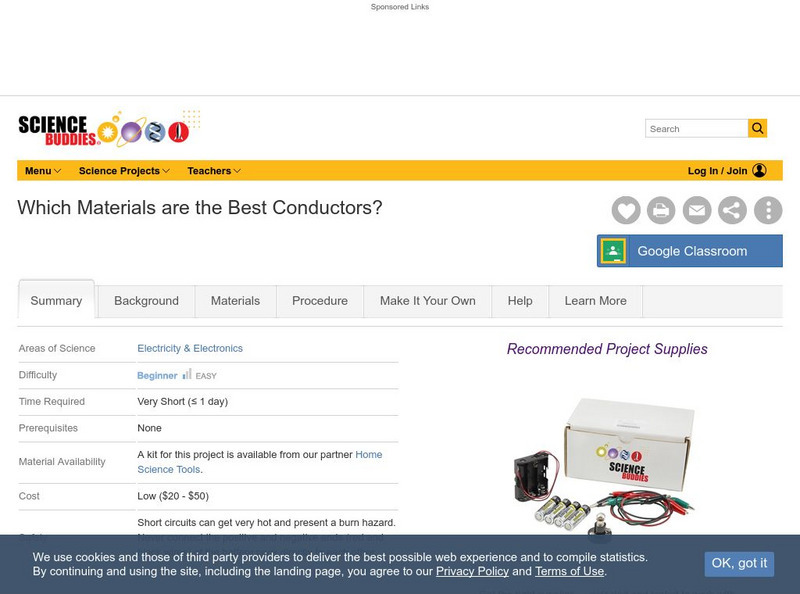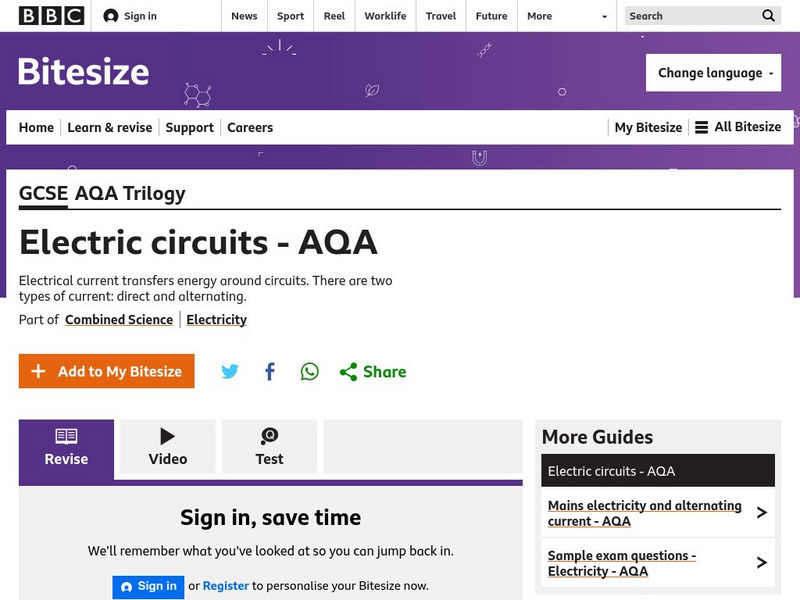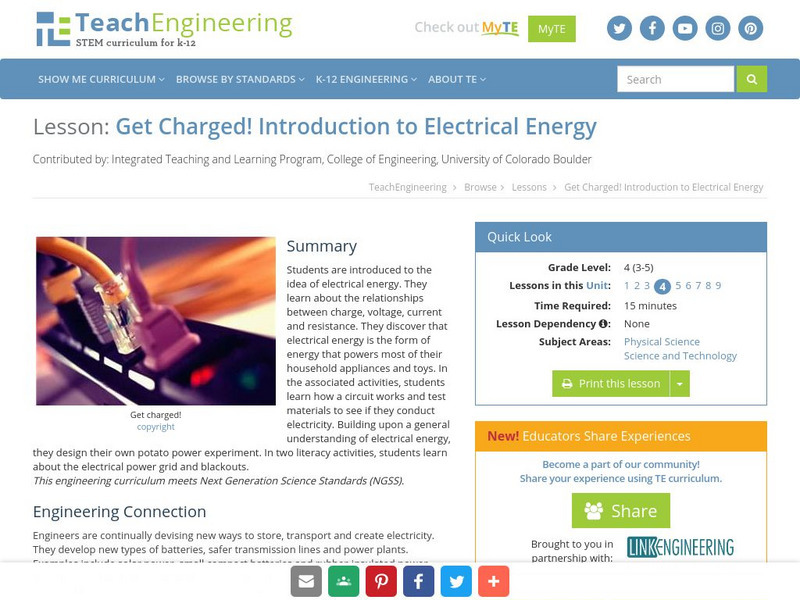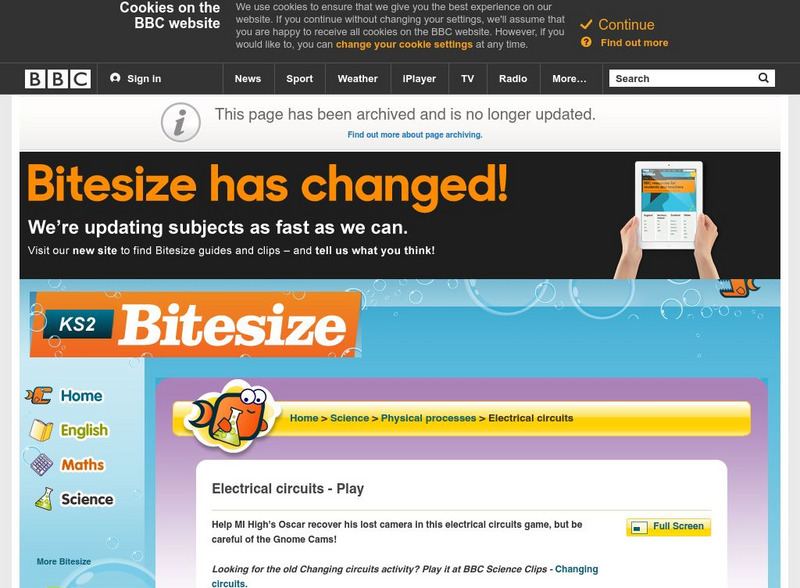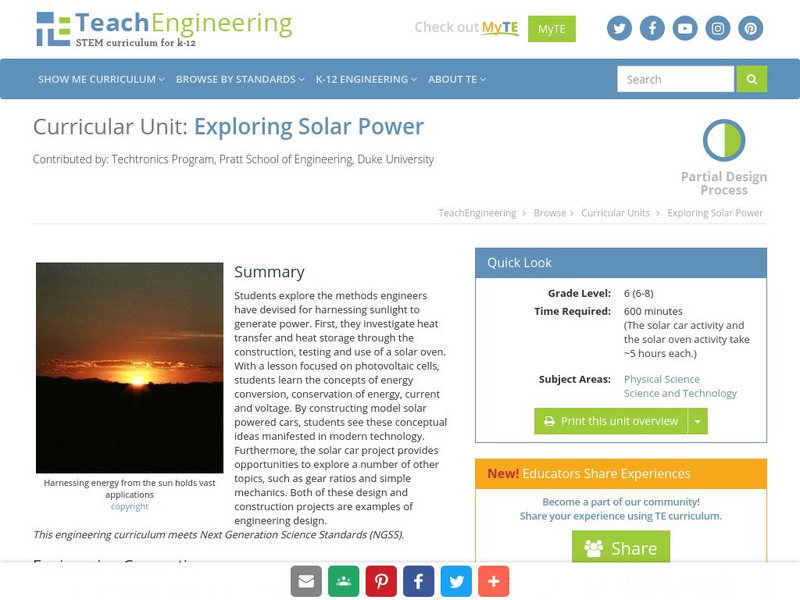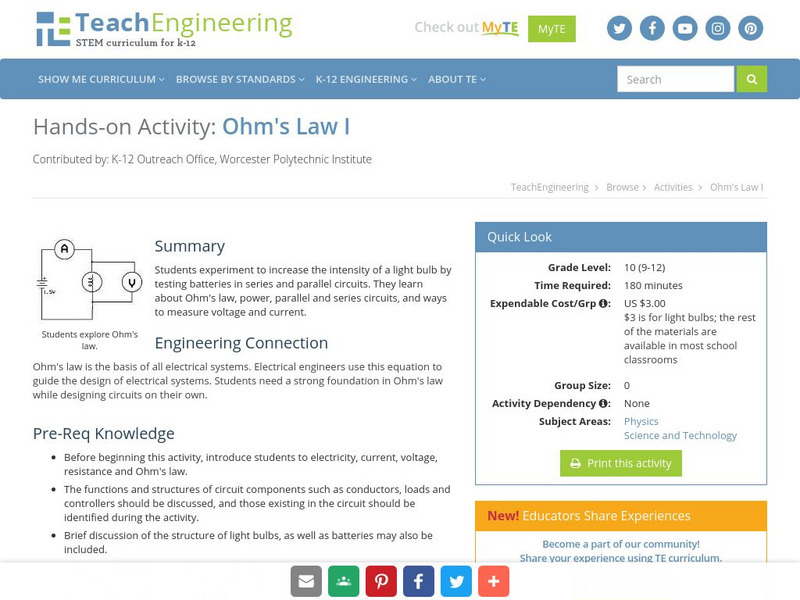Curated OER
Blade Design Challenge
Students identify the differences between non-renewable and renewable energy sources. They construct a PVC wind turbine and design a set of blades to extract as much energy as possible from low and high wind conditions.
Curated OER
Motor Control AC Voltage
Students demonstrate that motors work on two different voltages. They connect a single-phase AC motor to run on different voltages.
BBC
Bbc: Gcse Bitesize: Electric Circuits
Current transfers energy around circuits. Circuit components have various properties that can be measured and then used to make circuits for control and also circuits for testing other components.
BBC
Bbc: Gcse Bitesize: What Is Electric Charge? Ocr 21 C
This lesson focuses on electric charges. Electric current is the flow of electric charge. Some insulating materials become electrically charged when they are rubbed together. A substance that gains electrons becomes negatively charged,...
Science Buddies
Science Buddies: Which Materials Are the Best Conductors?
There are two main types of materials when it comes to electricity, conductors, and insulators. What are they made of? Find out by testing different materials in a circuit to see which ones conduct the most electricity.
Science Buddies
Science Buddies: Project Ideas: Which Materials Are the Best Conductors?
A simple science fair project to test whether electricity can flow between two things. The Science Buddies project ideas are set up consistently beginning with an abstract, objective, and introduction, followed by a section on terms,...
BBC
Bbc: Gcse Bitesize: Mains Electricity and Alternating Current Aqa
This lesson focuses on Mains Electricity and Alternating Current. Electrical supplies can be direct current (DC) or alternating current (AC). The UK mains electricity supply is about 230V at 50 Hz. It explains the difference between AC...
BBC
Bbc: Gcse Bitesize: Electric Circuits Aqa
This lesson focuses on Electrical circuits including standard symbols for electrical components, a list of components and what they do, a discussion of various types of resistors, and alternating current and direct current. Links to a...
Science Education Resource Center at Carleton College
Serc: Investigating Testing for Electrical Conductivity Using Materials
In this activity, students will understand that electricity moves through different circuits and discover what types of materials are conductors and insulators.
Hunkins Experiments
Hunkin's Experiments: Electric Shocks!!
Hunkin's Experiments is a group of simple cartoon illustrations of scientific principles. Some would work well in the classroom, but others have little value beyond entertaining students. All of the projects are easy to do. These...
TeachEngineering
Teach Engineering: Get Charged!
Students are introduced to the idea of electrical energy. They learn about the relationships between charge, voltage, current and resistance. They discover that electrical energy is the form of energy that powers most of their household...
BBC
Bb Ci Schools: Revisewise Science Electricity
This lesson provides an interactive activity on electrical circuits along with a information sheet and a practice test.
Physics Aviary
Physics Aviary: Induced Current Lab
This lab was designed to have students test the factors that determine how much current is induced in a circuit when area of the circuit is changed. This lab is a quantitive lab that supplements the lab on magnetic flux.
TeachEngineering
Teach Engineering: Exploring Solar Power
This unit provides students the opportunity to explore methods engineers have devised for harnessing sunlight to generate power. Students will initially explore heat transfer and heat storage through the construction, testing, and...
TeachEngineering
Teach Engineering: Ohm's Law I
Students will work to increase the intensity of a light bulb by testing batteries in series and parallel circuits. It analyzes Ohm's Law, power, parallel and series circuits, and ways to measure voltage and current.
TeachEngineering
Teach Engineering: The Good, the Bad and the Electromagnet
Using plastic straws, wire, batteries and iron nails, student teams build and test two versions of electromagnets-one with and one without an iron nail at its core. They test each magnet's ability pick up loose staples, which reveals the...
BBC
Bbc: Gcse Bitesize: Electromagnets Higher
This lesson explains how a DC electric motor works including a diagram and description and links to a video and a test.
TeachEngineering
Teach Engineering: Saltwater Circuit
Students build a saltwater circuit, which is an electrical circuit that uses saltwater as part of the circuit. Students investigate the conductivity of saltwater, and develop an understanding of how the amount of salt in a solution...
Science Struck
Science Struck: Lcr Meter Working Principle and Uses
Explains what an LCR meter is and how it is used to measure the inductance, capacitance, and resistance of a circuit. Lists the different parameters of a circuit that it measures, describes two types of LCR meters, and gives definitions...
Physics Aviary
Physics Aviary: Magnetic Induction Lab
This lab was designed to have students test the things that can induce a current in a coil of wires. This lab is a purely quantitative lab.
Physics Aviary
Physics Aviary: Rail Gun Lab
This lab was designed to have students test the factors that affect the acceleration of a metal bar that is carrying a current through a magnetic field.
TryEngineering
Try Engineering: Series and Parallel Circuits
The core of this lesson is simple circuits and the differences between parallel and series circuit design. Students perform experiments to test the differences between the two circuit designs using low voltage light bulbs.
Other
How to smile.org: Build a Wind Turbine
A step-by-step guide to build a wind turbine. Using their wind turbine, students test how much energy is created by using a variety of wind blades and wind speeds.
Learn AP Physics
Learn Ap Physics: Physics B: Circuits
A site dedicated to help students prepare for the AP Physics B test. This specific site reviews circuits including current, resistance, power, Ohm's law, batteries, DC circuits, transformers, and car coils. Site contains links to video...


